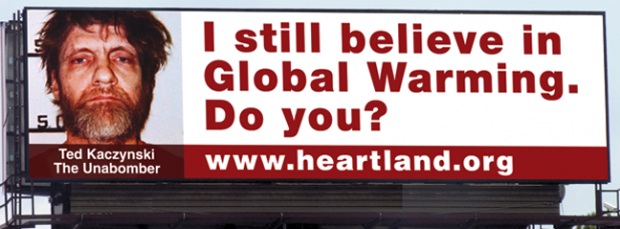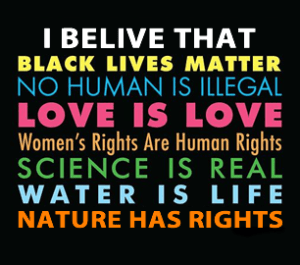Latest Climate Change Data and Denials
This week saw two important notes in climate news and events. First, an AP Wire story on new climate data revealing an alarming but unsurprising trend–more CO2 in the atmosphere.
The amount of heat-trapping carbon dioxide in the air jumped dramatically in 2012, making it very unlikely that global warming can be limited to another 2 degrees as many global leaders have hoped, new federal figures show. Scientists say the rise in CO2 reflects the world’s economy revving up and burning more fossil fuels, especially in China. Carbon dioxide levels jumped by 2.67 parts per million since 2011 to total just under 395 parts per million, says Pieter Tans, who leads the greenhouse gas measurement team for the National Oceanic and Atmospheric Administration. That’s the second highest rise in carbon emissions since record-keeping began in 1959…More coal-burning power plants, especially in the developing world, are the main reason emissions keep going up — even as they have declined in the U.S. and other places, in part through conservation and cleaner energy.
Secondly, as I wrote about recently, a new article in Science magazine this month outlined some the latest research on global temperature increases during the Holocene, which is the geologic epoch we are currently in, dating back over the past 12,000 years of climate history. The findings of this latest research is the same–we’re in or rapidly entering all sorts of record-breaking areas in terms of climate change–what some scientists and environmentalist have begun to refer to as the Anthropocene.
But at the same time, climate denial pieces like this recent article from Heartland Institute fellow James Taylor in Forbes Magazine, show just how out of touch with basic science the climate denial movement is.
New data from the National Oceanic and Atmospheric Administration show atmospheric carbon dioxide levels are continuing to rise but global temperatures are not following suit. The new data undercut assertions that atmospheric carbon dioxide is causing a global warming crisis…Global temperatures are essentially the same today as they were in 1995, when atmospheric carbon dioxide levels were merely 360 ppm. Atmospheric carbon dioxide levels rose 10 percent between 1995 and 2012, yet global temperatures did not rise at all. Global warming activists are having a difficult time explaining the ongoing disconnect between atmospheric carbon dioxide levels and global temperatures…as global warming ‘skeptics’ have observed all along, rising carbon dioxide emissions are having only a modest impact on global temperatures and are not creating a global warming crisis.
You can find a useful analysis and rebuttal of Taylor’s bogus claims by Max Greenburg here. The larger point to keep in mind is that well funded industry support groups like the Heartland Institute, where Taylor is a fellow, are in the forefront of the climate denial movement. More on Heartland here, which included stunts like the following billboard from spring 2012.
We should recall that the Heartland Institute, including Mr. Taylor, were at the heart of a 2009 and revived 2011 attempt to create a “climategate scandal” over supposedly incriminating e-mails from some scientists working on climate change at the University of East Anglia. More about the original incident background here.
A recently published paper on environmental reporting and public attitudes by Michael Nisbet, “Nature’s Prophet: Bill McKibben as Journalist, Public Intellectual, and Activist,” captures this dynamic succinctly:
Engaging the public and decision makers on climate change is made all the more difficult by the advertising, public relations, and lobbying strategies of powerful fossil-fuel companies that benefit from maintaining the status quo, and by aligned conservative political leaders and groups. Over the past two decades, this network has manufactured doubt in the news media about the reality of man-made climate change, exaggerated the economic costs of action, ridiculed environmentalists, intimidated scientists, and manipulated the use of scientific expertise in policy-making.
This is another good example of how the climate denial machine keeps it gears running. I’ll end with a short interview that Nisbit did about his latest research linked to above. For more on science and environmental reporting, check this Dot Earth post and this scienceblogs post.
Until next time…don’t believe the climate denial hype.
###



